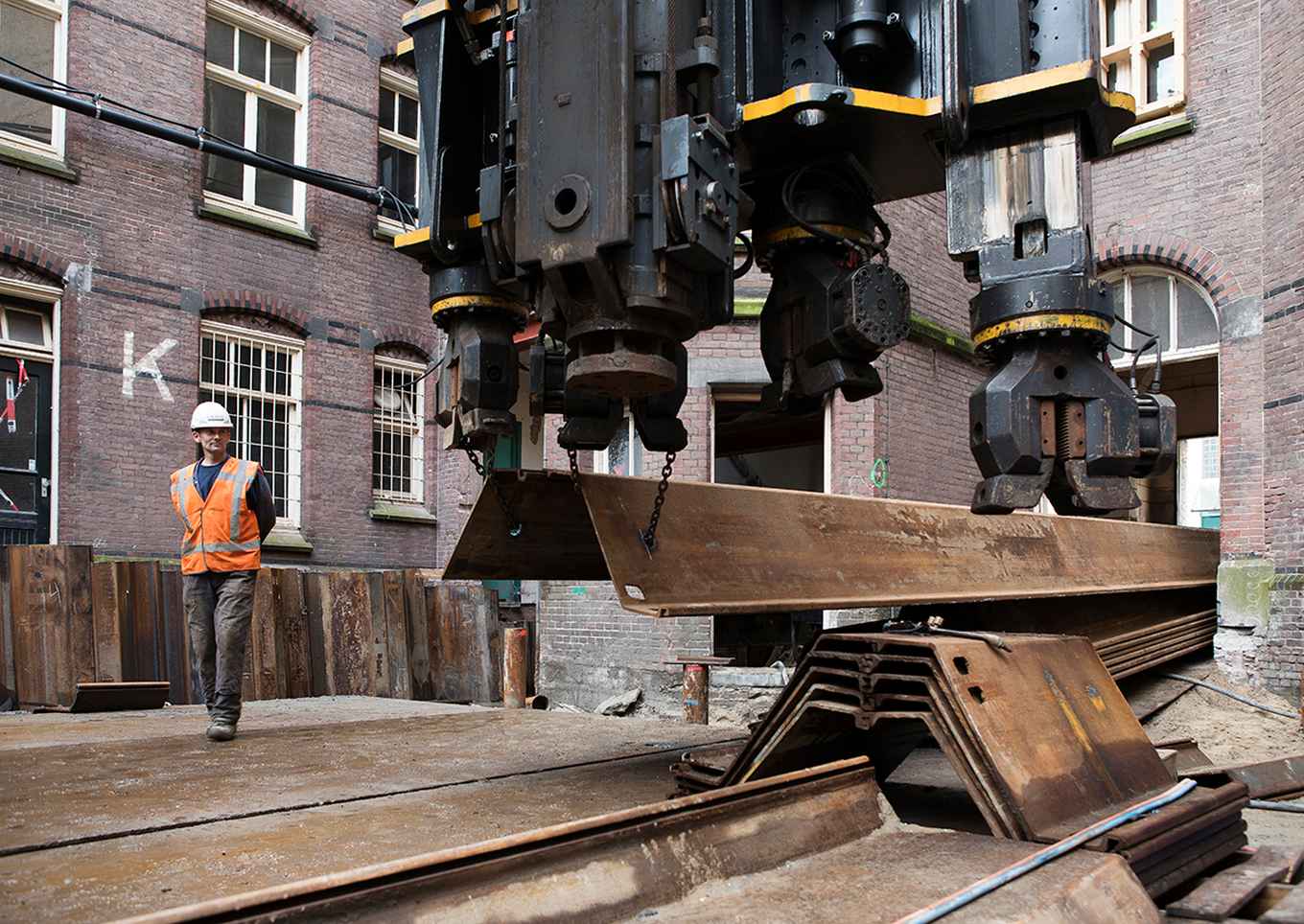Milestone for the new University Library: foundations completed
30 January 2020

This is a new milestone in the complex construction project on the Binnengasthuis site. Due to the poor state of the old foundations, the existing 1400 wooden piles needed replacing, which took several months. The new piles were driven into the ground to a depth of 22 metres. Over the coming months, the building will be moved from the old foundations onto the new ones. The building will be 'jacked up’ and positioned onto the new piles. This is a matter of constructional precision – the building will be lifted a mere 4 millimetres!
Careful restoration process
The University of Amsterdam feels it is important to preserve the monumental character of its buildings. The Tweede Chirurgische Kliniek and Zusterhuis buildings on the Binnengasthuis site are nationally listed buildings. These buildings will be restored and converted, together with the newly-built wing, into the new University Library. Restoration architect André van Stigt has been appointed to oversee the restoration on behalf of architectural firms MVSA Architects and J. van Stigt. Preparations are currently underway for the restoration work on both the inside and outside of the building. André van Stigt is coordinating these activities with the Listed Buildings and Archaeology department of the City of Amsterdam.
Jacking
A cellar area will be created beneath the building to accommodate a dispatch area, as well as the library lending centre, a study room and student study places, and sufficient space to park over 900 bicycles. Measures have been taken to enable the building to be jacked, including bricking up several windows and doors to stabilise the building. Metal beams, which will be used to reinforce the monumental façade, are visible on the outside, below the bricked-up windows and doors. In addition, trestles (steel beams) will be installed in the façade. The volume of steel in the building now amounts to two Eiffel Towers! This temporary construction is needed to enable the removal of the old foundations and the creation of the cellar area. This will prevent unnecessary damage when the building is jacked. Once the new foundations are guaranteed to be stable, the bricked-up elements and the steel beams will be removed again and the building will be restored to its original state.